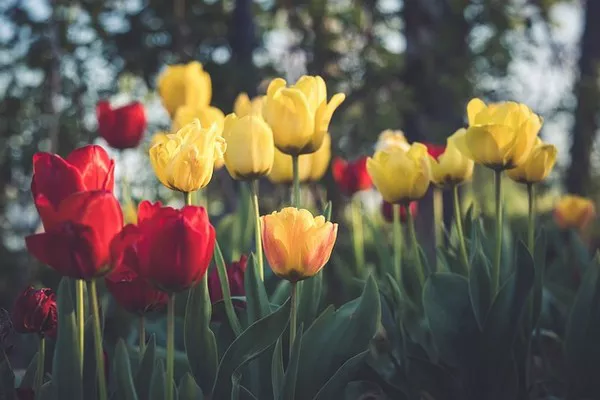Cut flowers have long adorned our homes, events, and celebrations, adding beauty and vibrancy to any setting. However, ensuring their longevity and freshness requires proper care and attention. From basic care tips to advanced preservation techniques, understanding how to maintain cut flowers can significantly extend their lifespan and enhance their aesthetic appeal. In this comprehensive guide, we delve into the essential practices and innovative methods that keep cut flowers fresh, vibrant, and beautiful.
Basic Care Tips
1. Trimming Stems:
Trimming the stems of cut flowers is a fundamental step in prolonging their freshness. It allows for better water absorption and prevents the buildup of bacteria that can lead to premature wilting. When trimming stems, it is crucial to make clean, angled cuts using sharp scissors or floral shears. An angled cut increases the surface area for water intake, promoting hydration and nutrient absorption. Avoid using dull blades or smashing the stems, as this can damage the vascular system of the flowers, hindering their ability to absorb water effectively.
2. Water Level and Quality:
Maintaining the appropriate water level and quality is paramount for preserving cut flowers. Fill the vase with enough room-temperature or cool water to submerge the stems without overcrowding. It is essential to check the water level daily and replenish it as needed to prevent dehydration. Additionally, changing the water every two to three days helps minimize bacterial growth and keeps the environment clean. Use filtered or distilled water if possible to avoid contaminants that may impede the flowers’ longevity.
3. Removing Leaves Below Waterline:
Leaves that are submerged in water can contribute to bacterial growth and accelerate the decay of cut flowers. To prevent this, remove any foliage that would be submerged below the waterline in the vase. This practice reduces the risk of contamination and allows for better air circulation around the stems. Use scissors or your fingers to gently remove leaves without causing damage to the stem or flowers. Keeping the water free from debris helps maintain optimal conditions for the flowers’ health and longevity.
4. Choosing the Right Vase:
Selecting an appropriate vase is essential for maximizing the freshness and visual impact of cut flowers. The vase should complement the size and shape of the flowers while providing ample space for them to spread out and breathe. For tall-stemmed flowers like roses or lilies, choose a vase with a narrow neck to support the stems and prevent them from drooping. Wide-mouthed vases are ideal for arrangements with multiple stems or a variety of blooms, allowing for artistic arrangement and optimal water distribution.
Advanced Preservation Techniques
1. Flower Food:
Commercial flower food contains a blend of nutrients, pH balancers, and antimicrobial agents that help prolong the life of cut flowers. When added to the vase water, flower food provides essential nutrients and inhibits bacterial growth, extending the freshness of the blooms. However, if commercial flower food is not available, several DIY alternatives can be used. For instance, mixing a solution of sugar and bleach or aspirin in water can mimic the effects of flower food, providing nourishment and minimizing microbial contamination.
2. Refrigeration:
Cool temperatures play a vital role in preserving the freshness of cut flowers by slowing down the rate of respiration and water loss. Refrigeration can be beneficial, especially for delicate flowers susceptible to wilting, such as tulips or hydrangeas. However, not all flowers respond well to refrigeration, so it is essential to research the specific requirements of each flower type. Generally, refrigerate cut flowers overnight or during periods of extreme heat to maintain their crispness and vitality.
3. Other Methods:
In addition to traditional preservation techniques, several unconventional methods have been purported to extend the lifespan of cut flowers. Hairspray, for example, is believed to create a protective barrier on the petals, reducing moisture loss and preserving their shape. Likewise, vodka, aspirin, or apple cider vinegar can be added to the vase water to regulate pH levels and inhibit bacterial growth. While these methods may offer temporary benefits, their long-term effectiveness and impact on flower health require further study and validation.
Flower-Specific Preservation Tips
While general care practices apply to most cut flowers, certain varieties may have specific needs that warrant special attention. For instance, roses benefit from frequent water changes and prefer slightly acidic conditions, making them responsive to vinegar-based solutions. Lilies, on the other hand, are sensitive to ethylene gas, which accelerates their aging process, so storing them away from ripening fruits is advisable. Tulips thrive in cold water and benefit from trimming the stem ends every few days to maintain water uptake and prevent drooping.
Conclusion
In conclusion, maintaining the freshness of cut flowers requires a combination of basic care tips and advanced preservation techniques. By adhering to proper trimming, watering, and vase selection practices, you can enhance the longevity and beauty of your floral arrangements. Experimenting with alternative preservation methods and tailoring care routines to specific flower types can further optimize results. With the right approach, you can enjoy the splendor of fresh-cut flowers for an extended period, bringing joy and elegance to any environment.


